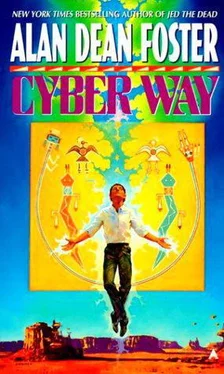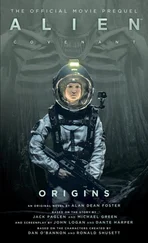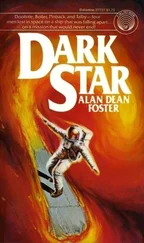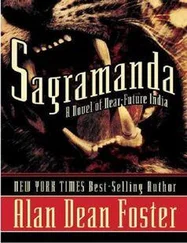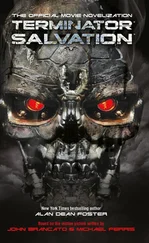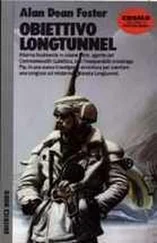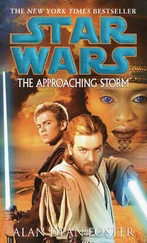“Look at this; at the detail, the fine edges and the straight lines. All done from memory, right on the ground on the floor of an old hogan. Depending on the Way, something like this could take many days to complete. When it was finished and the ceremony completed, Father and his assistants would destroy the entire work, end to beginning. For another client he would have to start all over again with the same painting, or a completely different one. From scratch. A terrible waste, but that is the way it was done. Done still, by the few men with the skill or gall to call themselves true hatathlis.” He resumed searching.
“So y’all don’t make any medicine paintings?” Moody was surprised how naturally the question came to mind.
Laughter looked at him as if he were crazy. “Are you kidding? Even if I knew how, I wouldn’t have time for it. Bill and I sell our work all over the world. I don’t mean to imply that we’re not respectful of it, but sandpainting can be art in the pure sense as well as the basis for traditional medicine. We develop and incorporate many of our own ideas into each painting, though it’s nice to have the original designs to use as a starting point.” Abruptly he hesitated, staring at the monitor.
“Wait a minute.”
Carefully he backtrawled until he found the image he wanted. It was difficult to make out details because the sandpainting was so large. Using the Widow, he focused on specific sections, enlarging them for a better view.
Moody grabbed the fax and held it out in front of him, placing it tangent to the monitor visually if not physically. Ooljee didn’t need to see the copy.
“That’s it, or if it’s not, then it’s something awfully damn similar. ” Moody eyed Red Laughter. “You said your father only did paintings for medicine.”
“And for my file, because my mother insisted on it. He was very reluctant to do it. He always grumbled.”
“He never made anything for commercial sale?”
“Not intentionally. But”—Laughter thought hard—“he did render a few of the more complicated ones on wood, so I could be sure to make a good copy for the records.”
“What happened to those?”
“I still have some of them.”
“Some?”
Red Laughter looked out the darkened window. “There was a time when we needed money badly. That’s when I think my mother sold one or two of the paintings. I remember there was yelling about it. You must understand, my father was a hatathli. But people offered her a lot of money.” He turned back to the monitor. “This might have been one of those.” He enlarged the edge. “See, it’s done on wood, not on earth. A very uncommon design. Let’s see what the accompanying text has to say. I always tried to make a record of what my father said about each painting.” He thumbed the Widow, and a text window appeared in the lower left quadrant of the monitor. It was in English, for which Moody was grateful.
“This sandpainting,” it informed them in obsolete two-D font, “is from a Way which has been forgotten. I remember only that it was an important Way. It was taught to me by my father, who learned it from his father, who learned it from one whose true name I do not know and which can only be guessed at. Like many of the Ways which the young people have forgotten, it is a very old Way. I put it down here so it will not join the forgotten, even though it seems to be of no use in medicine, since no one knows what ceremony it is a part of.”
“My grandfather’s words.” Bill Laughter was solemn. “None of the museum specialists or academics I showed this to has any idea what Way it is from,” Ooljee informed their hosts.
“Then it is truly from a forgotten one.” Bill Laughter looked at Moody. “The simplest of the traditional Ways is unbelievably complicated. Elements and devices are swapped between them whenever the resident hatathli thinks it expedient.”
“Not all is forgotten.” The elder Laughter generated a pointer within the Widow, used it to circle a substantial portion of the center-right section of the painting. “This whole piece here; it I know. The colors are strange and so is some of the design, but it is still recognizable.”
Moody tried and failed to make any sense of what the father had isolated. “What is it?” he finally asked exas-peratedly.
“A painting within a painting, called ‘Scavenger Being Carried Through the Skyhole by Eagles and Hawks Assisted by Snakes with Bird Power.’”
“I can see the bird shapes,” Moody conceded.
Bill Laughter took control of the spinner, isolating a long, impossibly attenuated human figure within the painting. “That’s Scavenger in the middle. The figures on either side of him are snakes. See the feathers they’ve been given, here and here? Bird power. As for the birds themselves, there are many kinds represented: big black hawks; black and white eagles; white hawks; big blue hawks; yellow-tailed, bald eagles. Even the guardians are snakes with bird power.
“These eagles on either side of the Scavenger figure, see how they’re linked by ropes of rainbow and lightning?” The pointer moved. “But these lines here I don’t recognize, or these small shapes. They shouldn’t be in this painting. And these designs just outside, that link it to the rest of the overall, larger work, I don’t recognize them at all. They could all be personal embellishments, but an old hatathli like Grandfather, I don’t know how much he’d go in for that kind of thing.”
“Maybe he was in an unusually artistic mood the day he made this one,” the detective blithely suggested.
“Embellishing was not unknown in my father’s time, or even before it. Hatathlis can be as individual as their medicine.” Red Laughter rubbed his chin. “It is just that it was not like him. I do not remember him doing this particular sandpainting, but it is here in the files, so that means he must have done it. Grandmother probably put it here. She’s the one who taught me the importance of keeping good records.”
“The Scavenger portion,” the younger Laughter explained, “is from the Bead Chant, but the rest of it is a total blank to me.”
Moody was squinting at the monitor, trying to will himself to make sense of it. “How do you tell the snakes and the lightning apart?”
“Sometimes you don’t. In our mythology they can be one and the same.”
“What about this business of a ‘skyhole’?”
Red Laughter sighed. “I do not want to go into the whole Way. It’s very complicated and uses many paintings. There used to be a fire dance involved, but—” He shrugged. “Today young people go to different kinds of dances.”
“At least we found it.” There was satisfaction in Ooljee’s voice.
“Let’s go back to the kitchen.” Bill Laughter switched off the zenat and mollybox, put the spinner back on the crowded desk.
Ooljee wanted to talk sandpainting, while Moody was much more interested in finding out if there might be a way to trace the original sale. He found himself talking to the younger Laughter while Ooljee engaged the elder at the kitchen table.
“What about that old building we saw coming in?” he asked, by way of making casual conversation.
“My grandfather’s. We maintain it for tradition’s sake. Also it’s nice just to go inside sometimes and sit on the floor and do nothing. Some of Grandfather’s things are still there and, well, it takes you back.”
Moody remembered the house he’d been raised in, back in Mississippi. Tin roof, wooden screen door always in need of repair, a porch slowly subsiding toward the Gulf. He understood.
“How come,” he wondered, studying the fax and sipping coffee, “you and your father haven’t reproduced this design? It’s sure enough attractive.”
Читать дальше
